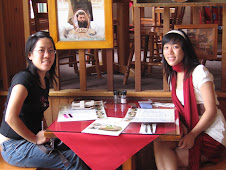
mahang or ant plant
another interesting plant found in our nature reserves and parks is the mahang or ant plant. we first came across this plant at lower peirce reservoir but since learning about it, i have started to notice them at macritchie reservoir, bukit batok nature park and sungei buloh wetland.
the mahang or ant plant macaranga triloba (so called because of the three lobes which make up the leaf) is an interesting example of symbiosis: the plant provides housing for a species of ant in its hollow, swollen leaf shoots and in return the ant protects the plant from leaf-eating insects.
its stem is hollow, as the pith within disintegrates just behind the meristem (growing tip). within the hollow, ants of the species crematogaster borneensis establish their colonies. small holes along the stem can be seen where the ants enter and exit. the plant also provides small white food bodies for the ants to feed on. in return, the ants protect the plant against foreign invading insects and other small creatures. the ants also bite off the growing tips of plants that come near the macaranga plant, hence preventing vines and other plants from growing over and smothering it.








